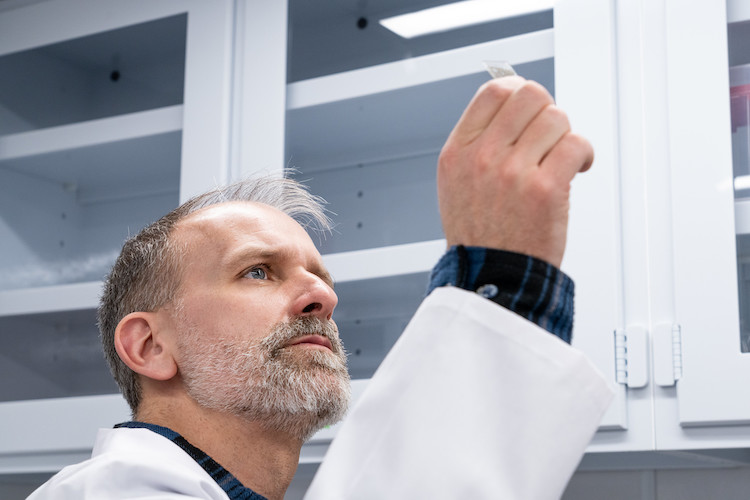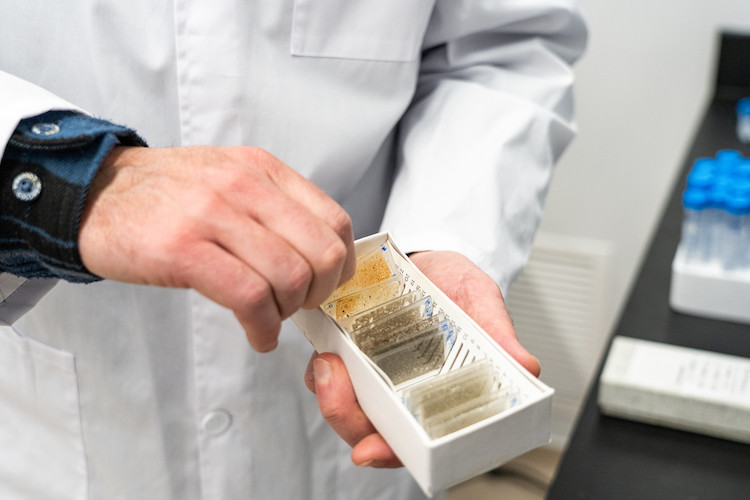Millions of years ago, Earth’s landmasses fused to form one supercontinent, Pangea. Over time, tectonic forces pulled them apart, a process called continental rifting that continues to reshape the planet today.
Tyrone Rooney, professor at Michigan State University’s Department of Earth and Environmental Sciences in the College of Natural Science, has built a career studying what causes these massive shifts. Since joining MSU in 2007, Rooney has traveled the globe analyzing volcanic rocks, leading fieldwork in East Africa’s Great Rift Valley, and mentoring more than 50 students in his on-campus lab.
His research, funded by the National Science Foundation, uses geochemistry to uncover the chemical signals left behind by rifting, offering insights into Earth’s past and future tectonic activity and resource development.
Here, Rooney discusses his path to geology, how he studies deep-Earth processes and what these findings mean for science and society.
What inspired your interest in geology, and how did you start researching continental rifting?

I was a late convert to the field. I was first interested in studying pharmacology at University College Dublin when I took a geology class on a whim. My instructor, an igneous petrologist, taught me about more than facts in a book. He taught me about wonder.
It was a testament to his ability to communicate. He communicated the fact that things weren’t all known. The idea that there are problems we don’t know about was exciting to me.
I came to the United States for the hydrogeology program at Penn State University. After studying tunnels and water inflow, I decided to return to the subject that had initially intrigued me.
What exactly is continental rifting, and what kinds of questions are you trying to answer?
Millions of years ago, nearly all of Earth’s continents fused in one giant land mass called Pangea. That is, until tectonic forces split them apart in a phenomenon called continental rifting.
There’s a question as to whether every plate has within it materials that tend to melt easier, like a Shakespearean character who carries the seeds of their own destruction. It’s possible the plates always have that fatal flaw. We’re trying to understand how this flaw gets activated.
My work in the College of Natural Science is fundamental, meaning the goal isn’t direct application. But the implications for this work, funded by the National Science Foundation, are endless. Future researchers could apply this research to geothermal models to help with electrification efforts. Oil companies with significant operations in offshore Angola can better understand how sediments filled the basin formed by rifting and generating oil under the Earth’s crust. Resource and exploration companies can leverage our insights on magmas to understand the development of critical mineral deposits.
How do you study rocks to learn what’s happening deep beneath the Earth’s surface?
Geochemistry is a tool for probing Earth’s processes. I study basalt rocks made from solidified lava to understand what’s happening far below the Earth’s surface. Just as a biologist collects cell samples, I collect these rocks because they are samples of the deep earth.
They’re direct from a part of the Earth we can’t get to. It tells us about what processes are happening below our feet. The thing is, you don’t generate melt in the Earth unless something is happening, and that process is what these lavas record.”
I look for those clues in places where tectonic plates have moved apart. One of my projects is at the Angolan margin in West Africa, which formed when the supercontinent Pangea ripped apart millions of years ago to create today’s seven continents.
But continental rifting isn’t a thing of the past. In East Africa, huge slabs of earth are actively pulling apart, forming what’s known as the Great Rift Valley. What looks like a beautiful valley is a rupture in the Earth’s surface. It’s a hotbed of geological activity, with volcanoes, hot springs and earthquakes.

I’ve been asked many times – how can you study a solid rock? There are number of options – some that involve turning the rock back into magma! First, we grind the rock into a fine powder and mix it with chemicals before heating it to a high temperature. Once the rock melts back into a magma, it’s quickly cooled into perfectly homogenized volcanic glass. My lab analyzes the glass composition using an X-ray and then a laser system.
Another option is to slice into the rock like a piece of cake to examine the layers. The slices are so thin they’re transparent, about a hair’s width. Crystals hiding inside the rock are visible in those slices, making it possible to perform an analysis of the different layers in the crystal – these layers tell us about the magma the crystal grew in.
The chemistry of those rocks tells the secrets hiding deep below the Earth’s surface. I can decipher the depth from which the magma came and whether it was the plate itself that melted or something sitting above or below it. I can also tell the approximate temperature that created the magma and what might have happened to the magma during its journey to the Earth’s surface.
Every bit of information offers a clue as to why the plates are breaking apart. Maybe excess heat from deep in the Earth is creating the rift, or giant plumes in the Earth’s mantle send materials under the plates that break up the surface.
I try to understand how the Earth is functioning using the chemistry of rock and how that tells us what’s happening at depth.
How has collaboration shaped your career and research?
I’ve relied on the American Geophysical Union, or AGU, for information and connecting with other scientists. These connections and friendships have led to new projects and ideas. The people I’ve met have led to collaborations and a greater depth of research.
It’s inconceivable to me how you could be successful as a scientist without that degree of connectivity with others.
This work has taken me to Egypt, the Panama Canal, New Zealand, Cape Town in South Africa, and even Duluth, Minnesota. I ended up in East Africa because my doctoral advisor had a project proposal and needed a student. I volunteered and never truly left.
I continued working there because I saw the different linkages that could happen. I was able to write proposals to get the funding to work on some of these things. New discoveries came from working with other scientists in different fields to pool our knowledge and try to learn more about the parts of the puzzle that each of us had. It has been an exciting and rewarding experience.
What does your lab look like today, and how are you training the next generation of scientists?
My lab is dedicated to steady productivity and understanding the processes beneath the Earth’s surface.
I’m really proud of the massive undergraduate research footprint and graduate students, who are busy with their own projects. They join me in studying giant basalt flows and mineral deposits in the Duluth Complex and the Upper Peninsula of Michigan, where a continental rift started in Minnesota but never completed. Several of the undergraduate students I work with have published their own papers in peer-reviewed journals.
My students and I also serve other MSU departments and even some industrial partners in Michigan. The lab facilities can provide the elemental composition of a wide range of materials, making it a valubale resource in the region. Even more importantly, our students learn how to run the samples and operate the high-level analytical machinery.
From the natural sciences perspective, having this machinery within the college is important because it facilitates a significant amount of research within the university and is key for training of the next generation of scientists and engineers.
